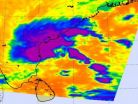(Press-News.org) CINCINNATI—Helicopter emergency medical services can be a life saver for patients needing immediate care. But, according to a University of Cincinnati study, the process of activating them often delays treatment beyond recommended times.
The study, published online ahead of print in Annals of Emergency Medicine, was led by assistant professor Jason McMullan, MD. In a multicenter, retrospective chart review, McMullan found that a majority of STEMI heart attack patients transferred by a hospital-based helicopter emergency medical service (HEMS) in 2007 did not receive treatment within the time period recommended by national physician groups.
For patients with a ST-elevation myocardial infarction (STEMI), a type of heart caused by a sudden, total blockage of a coronary artery, the American Heart Association and American College of Cardiologists have set a goal of 30 minutes to open the artery if a clot-busting drug is given (a treatment known as fibrinolysis) or 90 minutes if a stent is to be placed in the artery (percutaneous coronary intervention, or PCI). The length of time from the patient's arrival at the emergency department to treatment by PCI is commonly referred to as "door to balloon" time.
"The goal of treating patients suffering heart attacks is to open a clogged cardiac artery as soon as possible," says McMullan. "While all emergency departments have access to fibrinolysis, not every hospital is capable of PCI. As a result, many people are transferred to a PCI hospital to receive a stent and a helicopter is frequently used to make that transfer as fast as possible."
With the chart review, researchers aimed to estimate the proportion of STEMI patients transported by a hospital-based helicopter who met those national goals.
McMullan reviewed the charts of 179 subjects, flown by a helicopter emergency medical service from 16 referring to six receiving hospitals in Greater Cincinnati. He found that, of those patients transferred for PCI, only 3 percent received treatment within the 90-minute goal, and more than half were treated after two hours.
"Our results suggest that, when inter-hospital transfers are required, significant delays are introduced, even when a helicopter is used," says McMullan. "A tremendous amount of time is lost in trying to contact a cardiologist to accept the patient, which, during the time period studied, had to be done before Air Care could be called. We recommend that in these situations, hospitals without a PCI capability consider early fibrinolytic therapy."
The study found only one in five patients was treated with fibrinolytic therapy prior to transfer to a hospital with PCI capability. Of those, fewer than half were treated within the 30-minute goal.
Authors point towards delays in the process of activating HEMS that can contribute to delays in treatment.
"The take-home point of our findings is certainly not that helicopter EMS doesn't help STEMI heart attack patients; on the contrary, HEMS undoubtedly saves many lives in getting suburban and rural STEMI patients to cardiac catheterization labs for PCI as rapidly as possible," says paper co-author William Hinckley, MD. "Rather, the point is that calling the helicopter is not like saying, 'Beam me up, Scotty' on 'Star Trek.' It's fast, but it's not instantaneous."
They recommend that hospitals consider strategies to reduce the time required for transfers, possibly by creating a streamlined system in which an emergency medicine physician is able to call for both helicopter transport and cardiologist approval with a single phone call or by allowing non-physician personnel to request a transfer.
Hinckley says other strategies could include enabling rural EMS squads to activate Air Care from the field. Based on the research, he says Air Care is working with physician partners at referring and receiving hospitals to implement such new protocols and decrease the time from diagnosis to treatment for STEMI patients.
###Co-authors are Jared Bentley, Todd Davis, MD, Gregory Fermann, MD, Matthew Gunderman, Kimberly Ward Hart, William Knight, MD, Christopher Lindsell, PhD, April Shackleford, MD, and W. Brian Gibler, MD.
END
AUDIO:
This is a recording of a Red-tailed hawk made by Pamela Rasmussen in Maryland and now downloadable from the AVoCet database.
Click here for more information.
EAST LANSING, Mich. — A growing online library of bird sounds, photos and information offers a new resource for backyard birders and seasoned ornithologists alike.
The Avian Vocalizations Center at Michigan State University, or AVoCet,offers free downloads of bird sounds from around the world. It also features ...
Flying insects' altitude control mechanisms are the focus of research being conducted in a Caltech laboratory under an Air Force Office of Scientific Research grant that may lead to technology that controls altitude in a variety of aircraft for the Air Force.
"This work investigates sensory-motor feedback mechanisms in the insect brain that could inspire new approaches to flight stabilization and navigation in future insect-sized vehicles for the military," said Dr. Willard Larkin, AFOSR program manager who's supporting the work of lead researcher, Dr. Andrew Straw of ...
In an effort to pinpoint potential triggers leading to inflammatory responses that eventually contribute to depression, researchers are taking a close look at the immune system of people living in today's cleaner modern society.
Rates of depression in younger people have steadily grown to outnumber rates of depression in the older populations and researchers think it may be because of a loss of healthy bacteria.
In an article published in the December issue of Archives of General Psychiatry, Emory neuroscientist Charles Raison, MD, and colleagues say there is mounting ...
ORLANDO — A pioneering clinical trial is testing the effectiveness in leukemia of a small molecule that shuts down MDM2, a protein that can disable the well-known tumor suppressor p53.
Michael Andreeff, M.D., Ph.D., professor of Medicine and chief of Molecular Hematology and Therapy in the Department of Leukemia at The University of Texas MD Anderson Cancer Center, presented preliminary results of this ongoing Phase I study at the 52nd Annual Meeting of the American Society of Hematology. The clinical trial is under way at MD Anderson and five other sites in the United ...
New Rochelle, NY, December 7, 2010—NASA-funded research has uncovered a new life form on Earth, a microorganism that can not only survive but can thrive and reproduce by metabolizing arsenic, a chemical that is highly toxic for most other earthly organisms. This finding will revolutionize the field of astrobiology—the study of the origins, evolution, distribution, and future of life in the universe. Astrobiology, a peer-reviewed journal from Mary Ann Liebert, Inc.(www.liebertpub.com), has been the defining journal in this exciting area of study for the last decade. Table ...
System 94B has not been classified as a tropical depression, but NASA satellite data has shown that it is creating heavy rainfall near India's southeastern coast. A second NASA satellite revealed that strong wind shear is continuing to push convection to the northwest of System 94B's center of circulation.
The Tropical Rainfall Measuring Mission (TRMM) satellite viewed an area of thunderstorms associated with System 94B near the east coast of India in the Bay of Bengal on December 7 at 0123 UTC. Data from TRMM's Precipitation Radar (PR) and Microwave Imager (TMI) showed ...
GREENBELT, Md. -- A new NASA computer modeling effort has found that additional growth of plants and trees in a world with doubled atmospheric carbon dioxide levels would create a new negative feedback – a cooling effect – in the Earth's climate system that could work to reduce future global warming.
The cooling effect would be -0.3 degrees Celsius (C) (-0.5 Fahrenheit (F)) globally and -0.6 degrees C (-1.1 F) over land, compared to simulations where the feedback was not included, said Lahouari Bounoua, of Goddard Space Flight Center, Greenbelt, Md. Bounoua is lead author ...
CHAMPAIGN, Ill. – The flurry of smart-phone patent suits at the U.S. International Trade Commission (ITC) is being driven by technology companies eager to capitalize on the speed and expertise of the specialized venue, says a University of Illinois patent strategy expert.
Business professor Deepak Somaya says that this current wave of patent litigation is a "clash driven by company strategies."
"Smart phones combine lots of amazing innovation from both computing and mobile telephony, and technology companies are seeing their patents as a potential source of leverage, ...
Los Angeles, CA (December 7, 2010) Most people feel chills and shivers in response to music that thrills them, but some people feel these chills often and others feel them hardly at all. People who are particularly open to new experiences are most likely to have chills in response to music, according to a study in the current Social Psychological and Personality Science (published by SAGE).
Researchers Emily Nusbaum and Paul Silvia of University of North Carolina at Greensboro asked students about how often they felt chills down their spine, got goose bumps, or felt ...
MADISON — The "A" grades that high schoolers earn aren't just good for making the honor roll — they also make them healthier as adults, too.
Studies have long shown that education is linked to better health, but new research by Pamela Herd, an associate professor of public affairs and sociology at the University of Wisconsin-Madison, shows that higher academic performance in high school plays a critical role in better health throughout life.
"How well you do in school matters," Herd says about the findings, which were published in the December issue of the Journal ...





